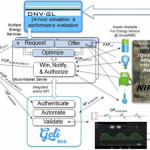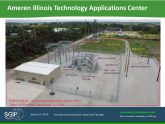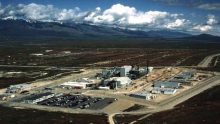Islands have been considered prime candidates for renewable energy microgrids from market inception. To date, solar-storage and other types of distributed, hybrid systems have been installed on Hawai’i, South Pacific, Indian Ocean, Mediterranean, Atlantic and Caribbean islands, but the market is really just beginning to take on well-defined shape and form.
![]()
Along parallel lines, Tesla made waves in the power and energy industry last year when it announced its modular, stationary Powerpack and Powerwall lithium-ion battery (LiB) energy storage systems. More recently, shareholders’ approval of Tesla’s acquisition of SolarCity creates a vertically integrated corporation capable of manufacturing, designing, engineering, installing and financing solar-storage microgrids from the neighborhood to utility-scale.
Announcements made in recent weeks makes it clear that Tesla and SolarCity have been working together to win island LiB solar-storage microrgrid contracts worldwide for quite some time.
Islands in the Sun

*KIUC
Bring EVs (electric vehicles) into the frame with solar PV-LiB energy storage and you have the fundamental building blocks of the emissions-free energy “ecosystem” Elon Musk and companies have been envisaging since the beginning. Back in 2015, the two companies entered into the U.S.’ first dispatchable solar PV-energy storage power purchase agreement (PPA) with Kaua’i Island Utility Cooperative (KIUC).
The system is designed to provide emissions-free electricity from local solar, hydro and biomass resources day and night at $0.14 per Kwh, more than 50 percent lower than the average $0.33 retail cost of electricity in the state.
At the time, KIUC, Hawai’i’s only member-owned electric utility, said it expected local renewable energy resources would provide 37 percent of electrical power generation in 2016.
SolarCity, which had been chosen to supply the solar PV for the KIUC project, announced Tesla would supply the 13 MW/52 MWh Powerpack lithium-ion (Li-ion) battery-based energy storage system that would enable solar energy from a PV array to be stored and dispatched to KIUC’s grid to ¨shave¨ peak demand in the evenings from 5-10 pm.
In the South Pacific, the Mamanuca Group and PowerSmart earlier this month unveiled the initial configuration of a solar-storage microgrid that ultimately is to provide all the electricity for Vunabaka, a new luxury resort and residential complex on the Fijian island of Mamolo.
Consisting of 20 Tesla Powerpack lithium-ion battery energy storage modules (4 MWh), and 1 MW of solar PV, the mini-grid entered an initial phase of production in October, providing emissions-free electrical power for freshwater supply, staff quarters, a commercial kitchen, boat shed and several multimillion dollar residences.
Island Microgrids: A Market Tipping Point?

Tesla-SolarCity is also providing the solar PV and LiB energy storage capacity for a utility microgrid on the island of Ocracoke off the North Carolina coast.
Connected to North Carolina Electric Membership Corporation’s (NCEMC) power plant, the solar-storage microgrid also will serve as a field lab to test the ability of solar microgrids to better serve local communities, as well as enhance NEMC’s larger grid operations. “We’re setting up here for the electricity of the future,” NCEMC project manager Bob Beadle was quoted in a news report.
“This is a learning laboratory for Tideland,” added spokesperson Heidi Jernigan Smith. “We’re exploring the potential for a microgrid.’ She added that Ocracoke’s challenging coastal environment offered an ideal experiment site.”
When connected to the grid, the batteries are charged during periods of low demand and dispatched when demand peaks and power is more expensive. While the batteries do not have the capacity to power Ocracoke completely during an outage, they will supplement utility grid power, boost the efficiency and enhance the resilience of local power supply.
“The Tesla batteries could potentially help us get over that start-up load,” Smith said. “It will be interesting to learn what benefits can be derived from the various microgrid components over time,” she elaborated. “This is new territory for everyone…We’re gaining valuable information for the future.”




